Featured snippets are pretty important in SEO. They're those little boxes that appear at the top of Google's search results, providing a direct answer to your query.
Getting your content to show up as a featured snippet can drive a ton of extra traffic to your site. I mean, who doesn't want that prime spot at the very top of the search results?
But snagging a featured snippet isn't easy. Google's algorithms are always evolving, and they're getting smarter at understanding what users are really looking for.
So you can't just stuff your content with keywords and call it a day. Nope, you've got to structure your site and content in a way that makes it crystal clear to Google that you've got the goods.
But getting that content optimization on point isn’t that straightforward, there are a couple of things you need to know and do—and that’s what this article is all about.
So let's dive into the nitty-gritty of how to pull it off, shall we?
Let's get started.
What is a Featured Snippet?
A featured snippet is a special box that appears at the top of Google's search results for certain queries. It's designed to provide a concise and direct answer to the user's question right on the search results page, without the need to click through to a website.
So for example, if you search for something like "how to boil an egg," Google may display a featured snippet with a step-by-step explanation pulled from a trusted website. This way, you can quickly get the key information you need without having to visit different pages.
Here is a screenshot we took of the query with Google providing a featured snippet.
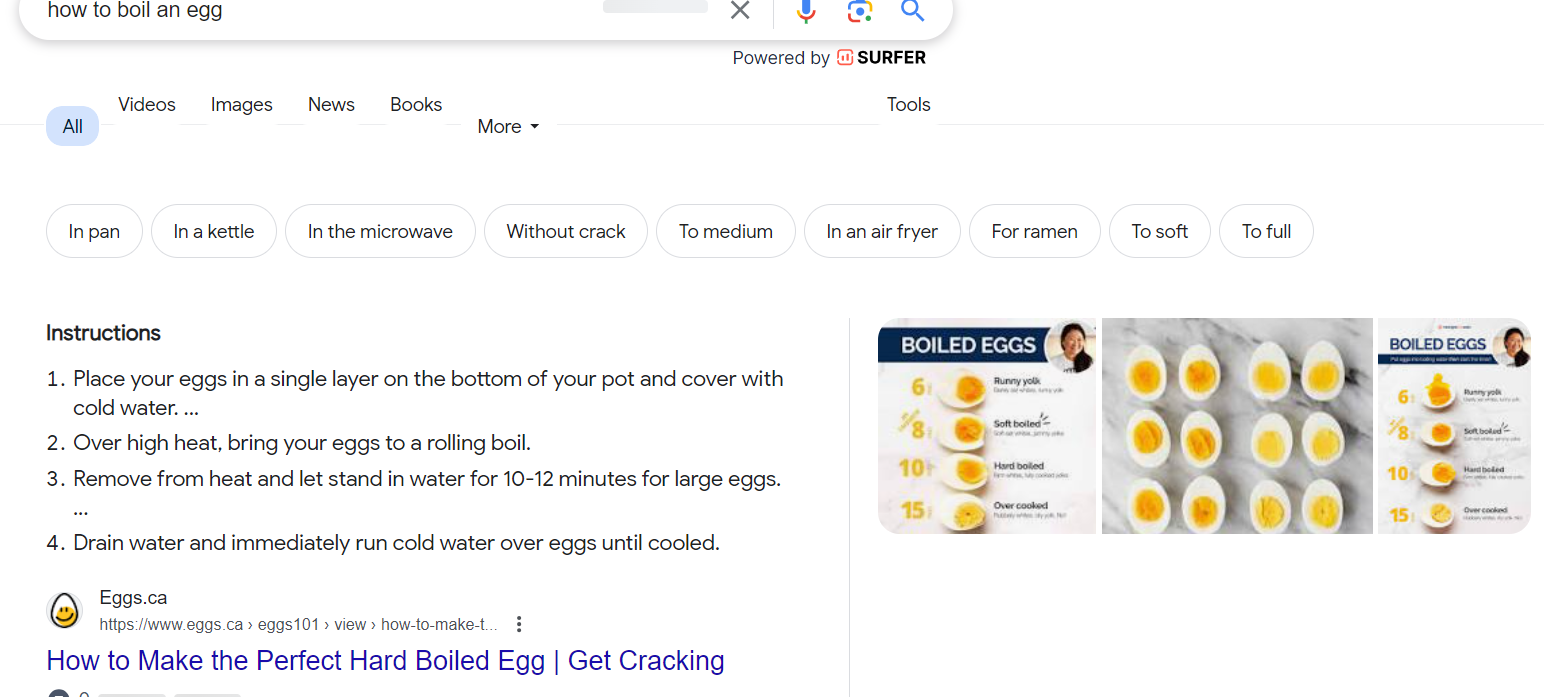
The content in the featured snippet is extracted from one of the top-ranking web pages for that search query. Google's algorithms analyze the pages and select what it determines to be the most relevant and helpful snippet to feature.
Having your content displayed as a featured snippet can be great for websites, as it gives them increased visibility and the chance to have their information prominently showcased on the search results page. At the same time, they will also provide a good user experience by surfacing quick answers to common queries.
Let’s look at this in more detail in the next section.
Why are Featured Snippets Important?
#1. Increased Visibility and Traffic
Featured snippets appear at the top of Google's search results, making them the first thing users see. This increased visibility can lead to higher click-through rates and more website traffic.
For example, if someone searches for "how to change a car tire," and your website's content is featured in the snippet, you're likely to get more clicks from users looking for that information.
#2. Establish Authority and Credibility
Being chosen as a featured snippet by Google's algorithms is a vote of confidence in the quality and relevance of your content. This can help establish your brand or website as an authority in your industry or niche. Users are more likely to trust and engage with content that Google has deemed reliable and valuable.
#3. Competitive Advantage
Featured snippets can give you a significant edge over your competitors. If your content is featured, it's essentially being promoted above all other search results, making it more likely for users to click on your website. This can translate into increased traffic, leads, and potentially higher conversions or sales.
#4. Voice Search Optimization
With the rise of voice assistants like Siri, Alexa, and Google Assistant, featured snippets have become even more important. These assistants often read out the featured snippet in response to voice searches, giving websites with featured snippets a distinct advantage in voice search optimization.
#5. Branding and Exposure
Even if users don't click on your featured snippet, having your website's name and URL prominently displayed can increase brand awareness and exposure. This can be particularly valuable for businesses looking to establish or reinforce their online presence.
Next, let’s look at the various snippets Google may show.
Four Types of Featured Snippets
#1. Paragraph Featured Snippet
This is a compact text excerpt, typically around 40-60 words, that directly answers a straightforward question.
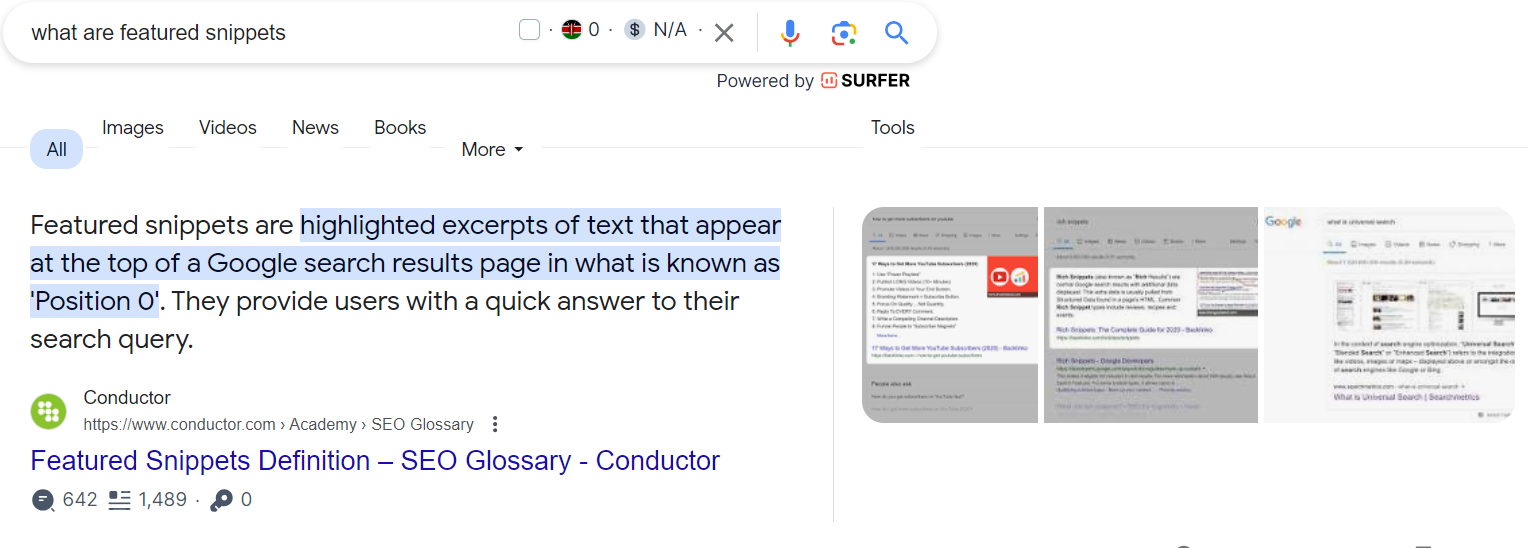
#2. List Featured Snippet
As the name suggests, this type presents the answer in the form of a bulleted or numbered list. A search for "How to make money on Legiit" could trigger a list snippet with different ways like this.

#3. Table Featured Snippet
It displays information in a tabular format, which is particularly useful for queries that involve data or comparisons. Searching for "Pound to kg" might show a table with columns for different values.
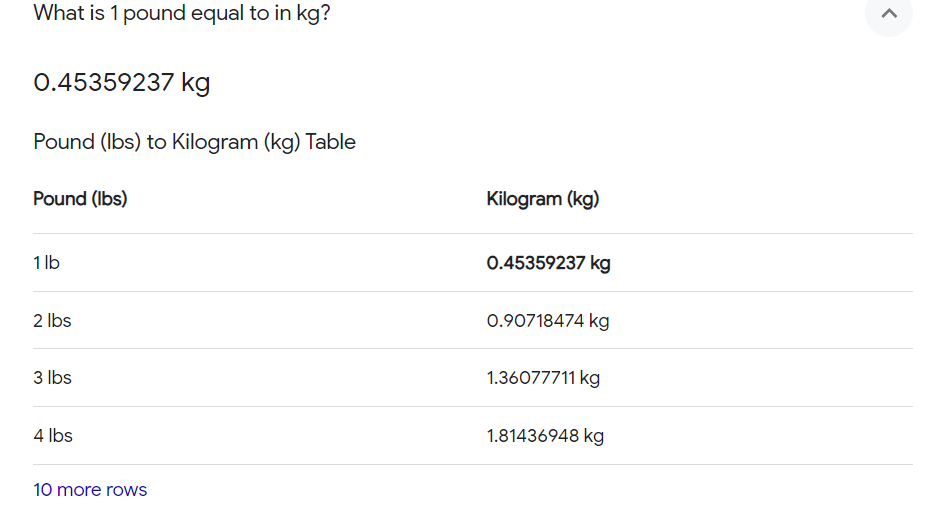
#4. Video Featured Snippet
For certain queries, Google may surface a short video clip as the featured snippet. This could be triggered by searches related to how-to tutorials, product reviews, or any topic where a video provides a more engaging answer.
For instance, a search for "how to use the legiit dashboard" could display a video snippet demonstrating the step-by-step process.
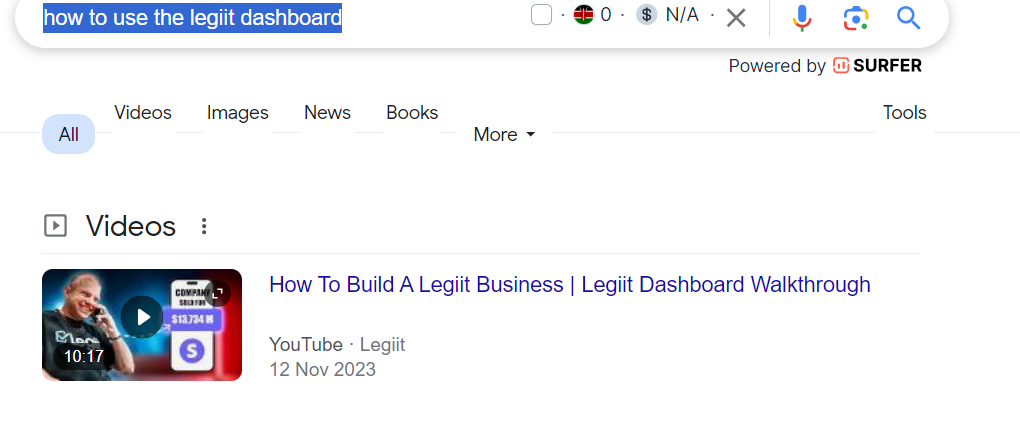
It's important to note that featured snippets are dynamic and can change based on the query and the available information on the web. So, always try your best to optimize your content to feature on any of the types.
Let’s look at the process in the next section.
How to Optimize Your Content for Featured Snippets
(i). Identify Relevant Questions
Start by researching the questions your target audience is likely to ask related to your topic or industry. Use tools like Answer The Public, Google's auto-suggest feature, or analyze the "People Also Ask" section in search results to find common queries.
Here is an example of Google’s autosuggest.
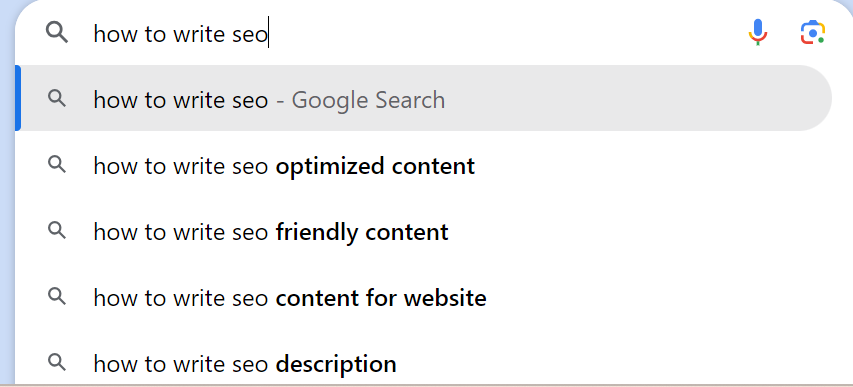
(ii). Structure Your Content
Structure your content in a way that directly addresses the identified questions. Use clear headings and subheadings, and provide concise, straightforward answers to the questions.
For example, if the question is "How do I bake a cake?" you could structure your content with headings like "Ingredients," "Step-by-Step Instructions," and "Baking Tips."
(iii). Use Paragraph Formatting
Break down your content into easily digestible paragraphs or bullet points. Featured snippets often pull information from well-formatted sections, making it easier for Google to understand and present the information
(iv). Optimize for Specific Query Types
Different types of queries may trigger different featured snippet formats, such as paragraphs, lists, tables, or videos. Optimize your content accordingly. For example, if the query is looking for a step-by-step process, use numbered lists or clear subheadings to make your content easily scannable.
(v). Use Clear and Concise Language
Featured snippets are designed to provide quick and direct answers, so use clear and concise language in your content. Avoid jargon or overly complex explanations, and aim for a conversational tone that is easy to understand.
(vi). Incorporate Relevant Media
Enhance your content with relevant images, videos, or infographics. These media elements can increase the chances of your content being featured as a rich snippet, which can include visuals alongside the text.
(vii). Keep Content Up-to-Date
Google prefers to display fresh and up-to-date information in featured snippets. Regularly review and update your content to ensure it remains accurate and relevant.
(viii). Monitor and Optimize
Track your progress by monitoring your search engine rankings and traffic sources. If your content is not being featured as a snippet, analyze the featured snippets for your target queries and adjust your content accordingly.
(ix). Use Structured Data
Implementing structured data markup, such as schema.org, can help search engines better understand the context and meaning of your content. This can increase your chances of being selected for featured snippets, as well as other rich results like knowledge panels or carousels.
(x). Be Patient and Consistent
Optimizing for featured snippets can take time and consistent effort. Continue to create high-quality, relevant content, and follow best practices to increase your chances of being featured.
Which Search Queries Don’t Trigger Featured Snippets?
Not all search queries trigger featured snippets. Here are some cases where featured snippets are less likely to appear:
1. Complex or Abstract Queries
Highly complex, abstract, or subjective questions may not trigger featured snippets. Google's algorithms might struggle to find a definitive and concise answer that can summarize such queries accurately. For example, a query like "What is the meaning of life?" is too abstract and philosophical for a featured snippet.
2. Ambiguous or Broad Queries
If a query is too broad or ambiguous, Google may not have enough context to provide a clear and concise answer in the form of a featured snippet.
For instance, a query like "What is marketing?" is too broad, and the answer could vary depending on the specific context or industry.
3. Queries Seeking Opinions or Recommendations
When a query seeks opinions, recommendations, or advice, it's less likely to trigger a featured snippet.
Google's algorithms are designed to provide factual information rather than subjective opinions or recommendations. For example, a query like "What is the best restaurant in New York City?" is subjective and may not trigger a featured snippet.
4. Queries Requiring Extensive Explanations
If a query requires a detailed explanation, a step-by-step guide, or a lengthy answer, it may not be suitable for a featured snippet. Google's featured snippets are designed to provide concise answers, not extensive explanations.
5. Queries with Local or Personalized Intent
Queries with strong local or personalized intent may not trigger featured snippets. Google's algorithms may recognize that the best answer could vary based on the user's location or personal preferences.
For example, a query like "What's the weather like today?" might not trigger a featured snippet because the answer depends on the user's location.
6. Queries Seeking Up-to-date Information
If a query is seeking up-to-date information, such as news, stock prices, or sports scores, it's less likely to trigger a featured snippet.
Google's featured snippets are generally based on pre-existing content and may not be the best source for real-time or constantly changing information.
Final Thoughts
That marks the end of this important guide to optimizing content for featured snippets.
Now you’ve got the power to “read and do” that pertains to content optimization for featured snippets in Google.
Go right ahead and start doing it.









 Download
Download